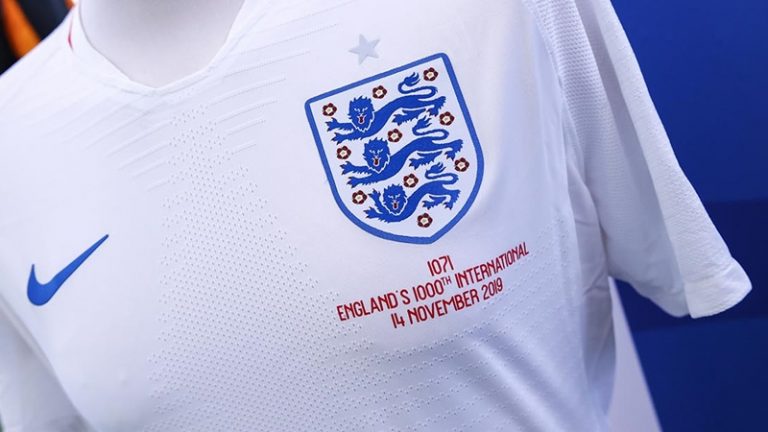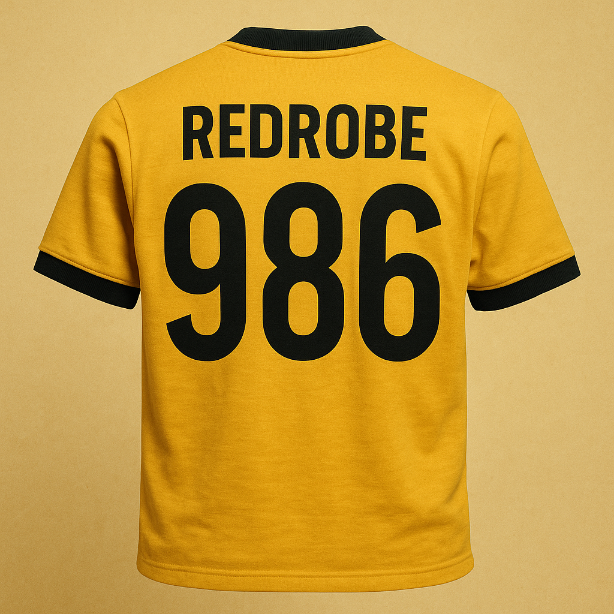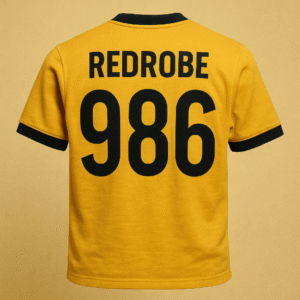The idea of heritage numbers has grown steadily in sport over the past two decades. First used in cricket, where players have long worn their Test cap number as a badge of honour, the practice has been adopted across codes. In rugby league, clubs such as Wigan, Leeds, and St Helens maintain published registers of every player to have represented them in a competitive first-team fixture, often commemorating centenaries or landmark matches by presenting players or their families with their number.

The Football Association followed suit in 2019, awarding “legacy numbers” to every England international since 1872. Tottenham Hotspur went further still in 2023 by printing each player’s legacy number inside the collar of the shirt, making the link between past and present a visible part of the matchday kit.
Southport are yet to formally adopt heritage numbers and up until recently there was a very practical reason why not – there didn’t exist a record complete enough to be able to do so. Now however there is, and therefore they now could. For the first time, every player who has pulled on the town’s colours (be they white, red, green, black, old gold or yellow) in a recognised first-class match can be placed in a single, unbroken sequence running from 1888 to today.
Why heritage numbers matter
The attraction of heritage numbers lies in their permanence. Shirt numbers change, careers are short, eras come and go, but the heritage number never alters. Once given, it is part of the record for ever.
- Respect for the pioneers: the players who laid the foundations of professional football in Southport are honoured equally with those of later generations.
- Continuity: the same sequence runs without interruption through more than 135 years, linking Lewis Tyldesley in 1888 to every debutant since. It is a unification of the past: the Lancashire League, the Lancashire Combination, the Football League years, the Northern Premier League and the National League are chapters in one continuous story.
- Identity: each player has one unique identifier. For a debutant, being told “you are Heritage Number 1,247” is a reminder that their name now sits alongside all who came before.
- Recognition: even the one-game player is remembered. In this system, no appearance is too small to matter.
This is why heritage numbers are a superior method to any other form of player numbering. Systems that count only Football League appearances, or divide between “league” and “non-league” eras, fracture the story. Heritage numbers cut across those boundaries. They tie together the whole record of Southport players in one lineage, regardless of the competition the club happened to be playing in at the time.
What counts and what does not
Numbers are not awarded for:
- Friendlies or exhibition games
- Testimonials or benefit matches
- Reserve, youth or trial fixtures
- County FA cups and minor local trophies outside the national FA or league organisers
- Wartime football, which is treated as unofficial
- Fixtures subsequently deemed void and expunged from the record
We will still keep a record of all of those things, but heritage numbers rest only on competitive first team football that counted towards the official records of those competitions.
For Southport, competitive first-team football is defined as:
- Fixtures arranged or sanctioned by the Football Association (such as the FA Cup and its qualifying rounds).
- Matches in the principal league competition entered in each season (from the Lancashire League and Lancashire Combination, through the Football League years, to the National League North), or arranged by the principal competition (e.g. Football League Trophy).
- Official end-of-season play-offs, where they form part of the principal competition.
How numbers are allocated
Players are numbered in strict sequence of debut. Where several debut in the same fixture, precedence is decided by:
- Time of entry to the field – starters before substitutes, then substitutes in the order they appear.
- Goalkeepers before outfield players.
- Alphabetical order by surname, then given name.
These principles match, in broad terms, those used by the FA and major rugby league clubs. Where some clubs have used shirt numbers in their method, the advent of squad numbers largely made those numbers meaningless. Our choice to give priority to the goalkeeper before outfield players preserves the uniqueness of that position.
A number will only be allocated when the season within which the player made their debut has reached its conclusion and all fixtures have been confirmed as counting towards the permanent record. This covers for scenarios where certain fixtures might be expunged from the record due to the cancellation of a competition, or the withdrawal of a team from a league.
How the sequence begins
Southport Central did not enter a league competition in 1888–89, so only FA Cup ties are counted in the first season of their existence. Two rounds were played, against Irwell Springs and South Shore, from which the first fourteen heritage numbers are derived. Although Thomas Lea (Lea-Jones) was the first professional formally engaged by the club, the goalkeeper-before-outfield principle means that Lewis Tyldesley, who kept goal in the opening match, is honoured as Heritage Number 1.

Players 1–11 all debuted against Irwell Springs on 6 October 1888, while numbers 12–14 followed in the South Shore tie three weeks later. From the following season the register expands with the club’s entry into league football, and from there it runs forward unbroken to the present.
Turning Points
- The first league debutant: After the 1888 FA Cup ties, Southport entered the Lancashire League in 1889–90. The first new player to make his debut in a league match – one who had not previously appeared in the FA Cup – was Jimmy Gee (Heritage No.15), the goalkeeper in the match against Rossendale on 14 September 1889.
- The first Football League debutant: In 1921 Southport stepped into the newly created Third Division North. The honour of being the first new Football League debutant belongs to Frank Drabble (Heritage No.446), who appeared in the opening fixture away to Durham City on 27 August 1921.
- The first post–First World War debutant: Competitive football resumed in 1919 after the wartime suspension. The first new Southport player of the era was George Hebden (Heritage No.385), who made his debut against Oldham on 30 August 1919.
- The first post–Second World War debutant: When League football restarted in 1946, Walker Grimsditch (Heritage No.736) was the first new player to appear, making his debut against Darlington on 31 August 1946.
- The first Northern Premier League debutant: After losing Football League status in 1978, the sequence carried on seamlessly. The first debutant in the new non-league era was Graham Cunneely (Heritage No.1105), who appeared against South Liverpool on 19 August 1978.
Heritage numbers prove their worth precisely because they bind these moments together. They do not restart at each change of competition. They are not tied to “league” or “non-league” labels. They cut across the whole history of Southport football, ensuring that every debutant, whatever the era, is recognised on equal terms.
Centuries and milestones:
• #100 – Hargreaves, 26 December 1894 v Heywood Central
• #250 – W Morris, 1 September 1908 v Everton
• #500 – George Sapsford, 17 October 1925 v Lincoln City
• #1000 – Dave Pearson, 13 November 1967 v Grimsby Town
• #1500 – Paul Jones, 4th October 1997 v Welling United
• #2000 – Tunde Owolabi, 10 August 2024 v Alfreton Town
Family links:
These numbers also remind us that heritage numbers are not just an abstract sequence but a reflection of the people and families who formed the backbone of Southport football. Here are some early examples of brothers each with a Heritage number of their own:
• The Lea brothers: Thomas Lea (#8), Southport’s first contracted professional, and Harry Lea (#30).
• The Sugg brothers: Frank Sugg (#26), a cricketer of Test-match pedigree, and Walter Sugg (#32).
• The Gee brothers: Jimmy Gee (#15), the first league debutant, and Charlie Gee (#34).
The Hall of Fame
These are the numbers assigned to the current inductees in the Southport FC Hall of Fame:
• #242 Dossy Wright
• #245 Billy Watson
• #296 Eddie Mosscrop
• #329 Billy Semple
• #454 Jimmy Fay
• #575 Archie Waterston
• #684 Joe Patrick
• #782 Trevor Hitchen
• #850 George Bromilow
• #927 Reg Blore
• #939 Arthur Peat
• #945 Alan Spence
• #948 Tony Beanland
• #959 Alex Russell
• #967 Colin Alty
• #986 Eric Redrobe
• #1018 Frank Lee
• #1061 George Dewsnip
• #1095 Gary Cooper
• #1184 Paul Evans
• #1377 Alan McDonald
• #1388 Kevin Mooney
• #1394 David Gamble
• #1470 Brian Butler
• #1528 Steve Dickinson
• #1574 Steve Pickford
• #1584 Earl Davis
• #1618 Michael Powell
• #1640 Kevin Lee
Current squad heritage numbers
Each members of the current squad will too have a heritage number, continuing the sequence that began in 1888. Listed in strict order of debut:
• #1687 Tony McMillan
• #1709 Danny Lloyd
• #1975 Chris Renshaw
• #1984 Luke Burgess
• #1990 Will Russ
• #1993 Jordan Keane
• #1995 Sam Minihan
• #1996 Tom Moore
• #1999 Sonny Hilton
• #2005 Aaron Pickles
• #2008 Arthur Gnahoua
• #2009 Dan Pike
Assistant Manager Mark Duffy is number #1663.
Who’s Next?
Should the season reach its conclusion without any further void fixtures (or competitions) then the following numbers will also be assigned:
• #2011 Ted Lavelle
• #2012 Paul Murphy-Worrall
• #2013 Luke Tabone
• #2014 Mo Touray
• #2015 Dana Amaral
• #2016 Jordan Slew
• #2017 Ne-Jai Tucker
• #2018 Rio Alston
• #2019 Ben Collins
• #2020 Callum Edwards
• #2021 Nathan Sandison
• #2022 Malakai McKenzie
• #2023 Jim Simms
• #2024 Adrien Thibaut
• #2025 Luke Griffiths
The Full List
Click here to see the full list of players and search for your own favourite.
It’s one continuous record, unbroken by divisions or eras.
One Port. One History. One Club. Since 1888.
Discover more from Southport Central
Subscribe to get the latest posts sent to your email.

 0 - 0 v Kings Lynn Town (H) 01/11/2025
0 - 0 v Kings Lynn Town (H) 01/11/2025 



More Stories
The Shifting Shape of the FA Cup
362* and Counting: Southport’s FA Cup Record
The New Low: Southport’s Worst-Ever League Finish